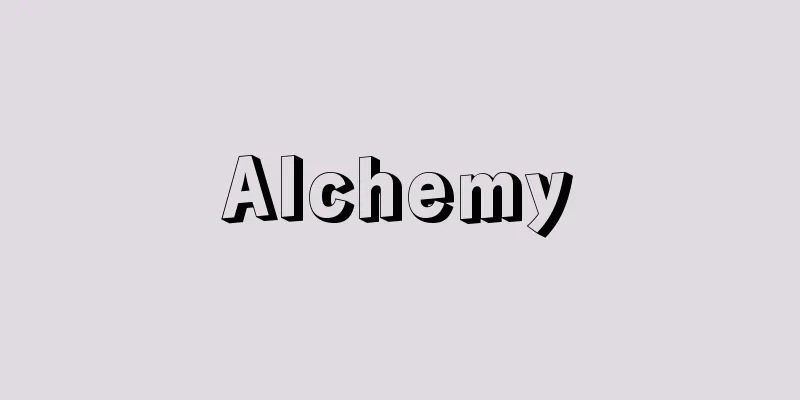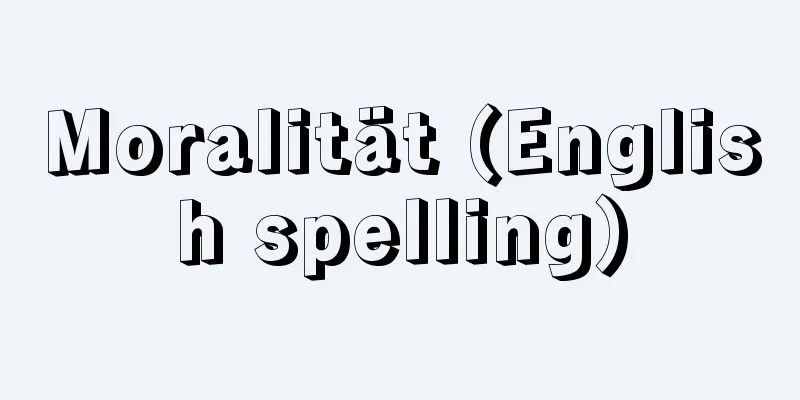Alchemy

|
The English word alchemy comes from the Arabic al-kimīa, which in turn goes back to the Greek chyma, meaning metal casting, which in turn is thought to have originated from the Ancient Egyptian kēme, meaning black. Originally, the essence of alchemy was a mixture of speculative, mystical, and religious elements on the one hand, and practical and technical elements on the other, and it spread widely throughout Europe (Note that in the East, alchemy had been practiced since ancient times in China, with the aim of discovering an elixir of longevity). Alchemy became popular during the Hellenistic period, triggered by Aristotle's theory of the relationship between the four elements (fire, air, water, and earth) and the four properties (dry, moist, cold, and warm). According to this theory, each of the four elements has one property in common. Fire is warm and dry, air is warm and moist, water is cold and moist, and earth is cold and dry. For example, fire becomes air through the medium of warmth, and air becomes water through the medium of moisture. Based on Aristotle's theory, some scholars of the Hellenistic period believed that since all matter is made up of the four elements, various metals could be created by changing the ratios of the four properties of a substance; they also argued that precious metals (gold, silver) could be created from base metals (copper, iron, lead, etc.). Early alchemy ideas were a mixture of Plato, Aristotle, Neo-Pythagoreans, Gnostics, Stoic philosophy, religion, astrology, and popular beliefs, and were difficult to understand due to symbolism and allegorical expressions. On the other hand, in terms of the techniques of alchemy, it was thought that metals could be turned into precious metals in the following order: black → white (silver) → yellow (gold) → iosity (ideal metal), and various experimental distillers, sublimators, and digesters were invented. In the medieval Islamic world, while inheriting the Hellenistic tradition, they developed their own unique characteristics. For example, Jabir bin Hayyan in the 8th century classified substances into "essences" (volatile substances such as camphor, mercury, arsenic, and sulfur), "metals" (metals), and "objects" (non-volatile solids that can be turned into powder, i.e., substances other than essences and metals). He also said that "elixir" (the philosopher's stone) was essential in alchemy. Subsequent alchemists made strenuous, but futile efforts to discover this elixir. However, by the 12th century, new chemical agents such as sand, ammonia, mineral acids, and borax had been discovered, but their pharmaceutical and metallurgical techniques were limited to simple grinding, filtering, boiling, and melting. Alchemy was introduced from the Islamic world into Christian culture in medieval Europe. Some clergymen who could read Latin translations of the time (A. Magnus, T. Aquinas, R. Bacon, etc.) were interested in alchemy. However, their reactions to alchemy varied, ranging from "conditionally accepting it," "only a little interest," to "believing in the potential of alchemy." Thus, people in the Middle Ages were attracted to alchemy by the mysterious nature of the art, and by the vulgar desire to turn base metals into precious metals (gold). However, not everyone who learned about alchemy became obsessed with it. In general, the Catholic Church was opposed to alchemy, and Pope John XXII (reigned 1316-1334) issued a decree banning alchemy and declaring that alchemists and their instigators would be punished. Charles V (reigned 1364-1380) also banned the possession of instruments necessary for alchemy in 1380. The English writer Chaucer made humorous and scathing satire of alchemists in his Canterbury Tales. On the other hand, not everyone who supported or supported alchemy grasped the scientific nature of alchemy, and no one could have realized this at the time. This is evident from the fact that even Newton in the 17th century had a strong interest in alchemy and took it seriously. There were two notable alchemists (or people who were considered to be alchemists) in the Middle Ages. One of them is the Spanish scholastic Lull. Although he himself is said to have distrusted alchemy, 80 books on alchemy were published under his name. They were published after his death, and are probably written by his successors to encourage his mystical tendencies. The characteristic of these books is that they symbolize the principles, materials, and operations of alchemy with the alphabet, and various procedures are represented by further combinations of these letters. They also describe how to make metals white (silver) and yellow (gold), but the most important thing is the fifth element (spiritus), which they apply to the newly discovered alcohol. It is said that Lull said, "If the sea water is made of mercury, I can turn the sea into gold." The other is Goebel, who is said to have written Summa perfectionis magisterii, an important book on alchemy in the medieval Christian world. Although Gebel is the Latin name of Jabir (bin Hayyan), there is no relation to this 8th century Jabir, and The Book of the Enchantment of Metals was probably written in the Islamic world in the late 13th or early 14th century. It contains a refutation of the belief in the possibility of transmutation of metals, the principles of the nature of metals, their synthesis from sulphur and mercury, the definitions and properties of six metals, gold, silver, lead, tin, copper and iron, methods for various chemical manipulations, preparations for the transmutation of metals with drugs or elixirs, and analytical methods for determining the success or failure of transmutation. In the Middle Ages, a great number of symbolic images relating to alchemy appear: marriage (the union of metals), eggs, pregnant chambers, vessels in which substances are incubated, and many other allegories. During the Renaissance, the study of alchemy became more and more popular and caused various social ripples. There are several works related to alchemy among the works of artists of that time, but Bruegel's work depicting human folly is particularly famous. It depicts a scene in the house of an alchemist master, and also reflects the state of mind of the alchemist. His wife with an empty wallet, two assistants working, children rummaging through the cupboards for food, and outside, a nun comforting the poor wives of the alchemist. In contrast to the proud painting of the alchemist, this work shows fruitless learning, folly and poverty. During the so-called Scientific Revolution in the 16th century, alchemy, which had been strongly supported until then, passed its heyday and began to lose its speculative and mystical aspects. Instead, new ideas were injected and a new field of science called chemistry emerged. The birth of chemistry was unrelated to alchemical ideas, objectives, and experimental methods, but many of the chemicals and experimental equipment used in alchemy were useful. The first person to symbolize the transitional period from alchemy to chemistry was the Dutchman Van Helmont. Alchemy was a "fake" science. And this "fake" science had two opposing tentacles from the beginning. One tentacle tried to approach scientific truth, and the other tentacle tried to shake hands with fraud, even if unconsciously. However, for a long time, people were unable to distinguish between these two tentacles. The birth and death of alchemy reflected human ignorance and desire, and the overcoming of them. [Hirata Hiroshi] "The Alchemist" by F.S. Taylor, translated by Hiroshi Hirata and Shinichiro Otsuki (1978, Jinbun Shoin)" ▽ "The Birth of Alchemy" by Hiroshi Hirata (1981, Kowa Publishing) Source: Shogakukan Encyclopedia Nipponica About Encyclopedia Nipponica Information | Legend |
|
錬金術を意味する英語のアルケミーalchemyは、アラビア語のアル・キミアal-kimīaに由来し、さらにこの語は、ギリシア語で金属鋳造を意味するキュマchymaにさかのぼり、そのまた原語は古代エジプト語で黒色を意味するケメkēmeであるとされている。 もともと錬金術の本質は、思弁的、神秘的、宗教的な色彩と、実際的、技術的な色彩とが混ざり合って、広くヨーロッパに普及した(なお、東洋では古くから中国で長命薬の発見を意図した錬丹術(れんたんじゅつ)が行われていた)。錬金術がヘレニズム時代に盛んになったが、そのきっかけは、アリストテレスが唱えた四元素(火・空気・水・土)と四性質(乾・湿・寒・温)との関連説である。それによると、四元素のそれぞれは、共通する性質を一つずつ有している。火は温と乾、空気は温と湿、水は寒と湿、土は寒と乾である。そしてたとえば、火は温の媒介によって空気になり、空気は湿の媒介によって水になるというぐあいである。そしてアリストテレスのこの説から、ヘレニズム時代の一部の学者たちは、あらゆる物質は四元素からできているから、物質の四性質の割合をさまざまに変えることによって、いろいろな金属ができるはずであると考え、卑金属(銅、鉄、鉛など)からも貴金属(金、銀)がつくりだせるはずであると主張した。 初期の錬金術思想には、プラトン、アリストテレス、新ピタゴラス派、グノーシス派、ストア哲学、宗教、占星術、俗信などが入り混じっており、また象徴主義とか寓意(ぐうい)的表現による難解さもあった。しかしその一方で、錬金術の技術面では、金属を、黒色化→白色化(銀)→黄色化(金)→イオシス化(理想的な金属)という順序で貴金属化することが考えられ、実験用のさまざまな蒸留器や昇華器、温浸器などが発明された。 中世のイスラム世界では、ヘレニズムの伝統を受け継ぎながら、独自の特色を打ち出した。たとえば、8世紀のジャービル・ビン・ハイヤーンは、物質を「精」(樟脳(しょうのう)、水銀、ヒ素、硫黄(いおう)など揮発性のもの)、「金属体」(金属)、「物体」(不揮発性で粉末状になる固体、つまり精や金属体以外のもの)に分類した。そして錬金術作業上、不可欠なものとして「エリキサ」(賢者の石)があるとした。この妙薬を発見するために以後の錬金術師たちは、懸命に、しかしむだな努力を払った。とはいえ、12世紀までに化学薬品としては、新しく、ろ砂、アンモニア、鉱酸、ホウ砂などを発見したが、その調剤術や冶金(やきん)術は、ごく簡単な搗砕(とうさい)、濾過(ろか)、煮沸、融解にすぎなかった。 中世ヨーロッパのキリスト教文化のなかにもイスラム世界から錬金術が入ってきた。その当時のラテン語訳の書物の読める一部の聖職者たち(A・マグヌス、T・アクィナス、R・ベーコンら)が錬金術に興味を寄せた。しかし彼らの錬金術への対応は、「条件付きで認める」「ほんのすこしの関心」「錬金術の可能性を信じる」とさまざまであった。こうして中世の人たちは、錬金術に潜む一種の神秘性や、卑金属を貴金属(金)にしたいという卑俗な物欲とも絡み合って、その魅力にひかれたが、錬金術を知った人たちのだれもがそのとりこになったわけではない。一般にカトリック教会は錬金術に反対の立場をとり、とくに教皇ヨハネス22世(在位1316~1334)は教令を発して錬金術を禁じ、錬金術師やその扇動者を処罰すると宣言し、またシャルル5世(在位1364~1380)は、1380年に錬金術操作に必要な器具類の所有を禁じた。イギリスの作家チョーサーはその『カンタベリー物語』で錬金術師をおもしろおかしく痛烈に皮肉っている。一方、錬金術に賛成し、支持した者のだれもが、錬金術の科学的な本質を把握していたわけでもないし、当時、そのような認識ができるはずもなかった。それは後世の17世紀のニュートンでさえ、錬金術に対して強い関心をもって真剣に考えていたことからも明らかであろう。中世のめぼしい錬金術師(またそう考えられた人物)に次の2人がいる。 その1人はスペインのスコラ学者ルルスである。彼自身は錬金術に不信を唱えたといわれるが、80編に及ぶ錬金術に関する書が彼の名で発表されている。それらは彼の死後に出されており、おそらく彼の後継者が、彼の神秘的傾向を助長するために書いたものであろうとされている。これらの著書の特色は、錬金術の原理や材料や操作をアルファベットで記号化し、さまざまな手順は、これらの文字をさらに組み合わせて示している。そして金属を白色化(銀)したり、黄色化(金)することを述べているが、もっとも重視したのは第五元素(精spiritus)で、これを新しく発見されたアルコールに適用している。「もしも海水が水銀でできているならば、私は海を金に変えてみせる」ということばはルルスのいったこととされている。いま1人は中世キリスト教世界の錬金術の重要な書である『金属貴化秘術全書』Summa perfectionis magisteriiの著者とされるゲーベルである。ゲーベルとはジャービル(・ビン・ハイヤーン)のラテン名ではあるが、8世紀のジャービルとは関係なく、『金属貴化秘術全書』は13世紀後半から14世紀初めにイスラム世界で書かれたものであろう。この書には、金属変換の可能性の信念への反対に対する反論、金属の自然の原理、金属は硫黄と水銀からつくられること、金・銀・鉛・錫(すず)・銅・鉄の六金属のそれぞれの定義と性質、さまざまな化学操作の方法、薬剤またはエリキサによって金属を変換させるための準備、金属変換の成功か失敗かを確かめる分析法などが述べられている。 中世には、錬金術に関する象徴的な絵が、おびただしい数で現れてくる。結婚(金属の結合)や、卵や妊婦の部屋、物質がふ化する容器など、さまざまな類推図が残っている。 ルネサンス期になると、錬金術の研究はますます盛んになり、社会的にさまざまな波紋をおこすようになる。当時の画家たちの作品にも、錬金術に関するいくつかの作品があるが、なかでもブリューゲルが、人間の愚行を描いた作品は有名である。それは、錬金術の達人の家の中の情景を描いており、錬金術師の心の状態も反映している。空の財布を持った妻、2人の助手の作業、食べ物を求めて食器棚をあさっている子供たち、そして屋外では修道女が貧しい錬金術師の妻たちを慰めている。この作品は誇らしい錬金術師の絵とは反対に、実りのない学問や愚行と困窮を示している。 16世紀のいわゆる科学革命の時代になると、それまで根強く支持され続けてきた錬金術は、最盛期を過ぎて、思弁的・神秘的な色彩は消え始め、それにかわって新しい思想が注入され、化学という科学の新分野が芽生えてきた。化学の誕生には、錬金術的な思想や目的、実験法などが無関係であったが、錬金術で使用した薬品類や実験器具類の多くが役だった。錬金術から化学へ移行する過渡期を象徴する最初の人物としては、オランダのファン・ヘルモントをあげることができる。 錬金術は「にせ」科学であった。そしてこの「にせ」科学は、初めから相反する二つの触手をもっていた。一つは科学的真理に近づこうとする触手であり、もう一つは無意識にしろ詐欺(さぎ)と握手しようとする触手である。しかし人々は長い間、この2本の触手を区別することができなかった。錬金術の誕生と死滅は、人間の無知と欲望、またその克服の反映であった。 [平田 寛] 『F・S・テイラー著、平田寛・大槻真一郎訳『錬金術師』(1978・人文書院)』▽『平田寛著『錬金術の誕生』(1981・恒和出版)』 出典 小学館 日本大百科全書(ニッポニカ)日本大百科全書(ニッポニカ)について 情報 | 凡例 |
>>: Forsythia suspensa; goldenbell
Recommend
Epi isomer - epiisomer
Please see the "Epimer" page. Source: E...
Okamatsu Santaro
Civil law scholar. Born in Kumamoto Prefecture. G...
Moritomo Tani
Year of death: 23 December 1628 (29 January 1628) ...
Boulainvilliers, Henri de
[Born] 21 October 1658, Sancerre Died January 23, ...
Sa'd b.Abī Waqqās
Arab general who conquered Iraq around ?-670. A me...
Kinuura coastal industrial area
...Fishing declined in the northern part of the p...
Rural Economic Rehabilitation Movement - Rural Economic Rehabilitation Movement
This was a government measure to combat the Showa ...
Aidulyon
...The extant "Imiodices" (also called ...
Osuki - Osukigo
…the name given to the peoples who lived in centr...
Kobus defassa (English spelling) Kobusdefassa
…[Yoshiharu Imaizumi]. … *Some of the terminology...
Lanius tigrinus
… [Takashi Saito]. . . *Some of the terminology t...
The Five Kings of Wa
Five kings of Wa in the 5th century whose names a...
Izapa
…However, during the three centuries preceding th...
Young Women's Christian Association - Christian Young Women's Association
(Young Women's Christian Association) A worldw...
Phalchan Kangri (mountain)
A high peak belonging to the Baltoro Mustagh in th...









